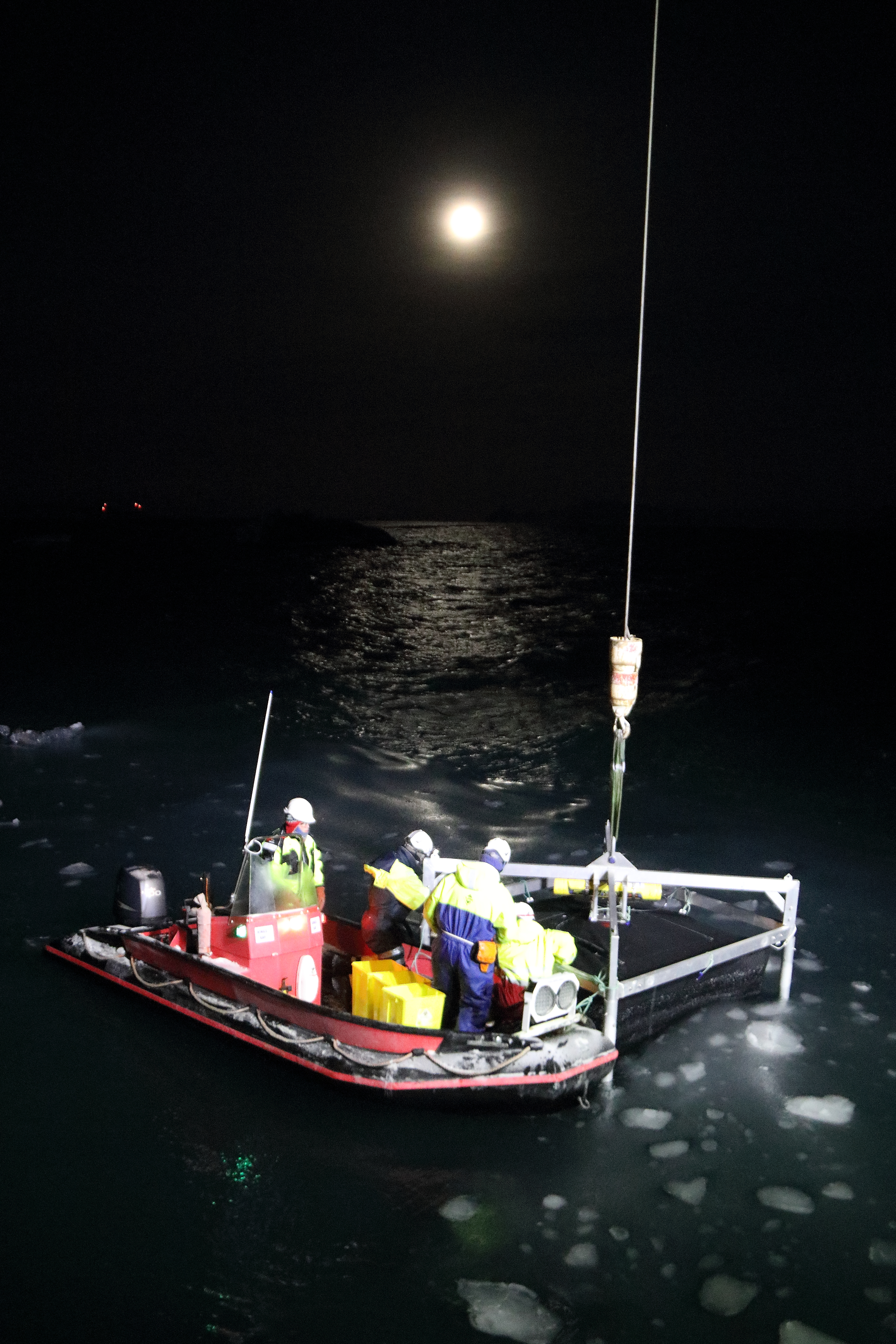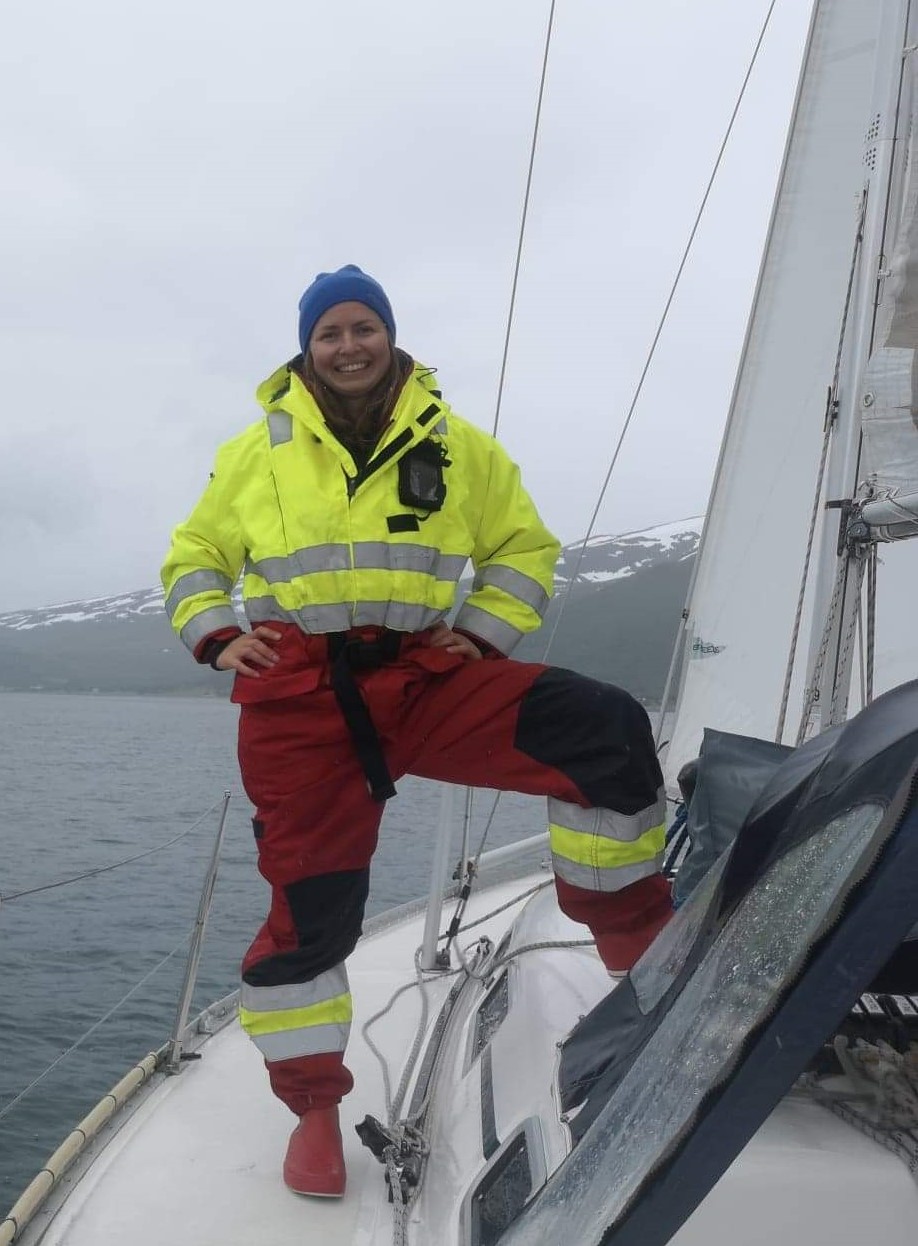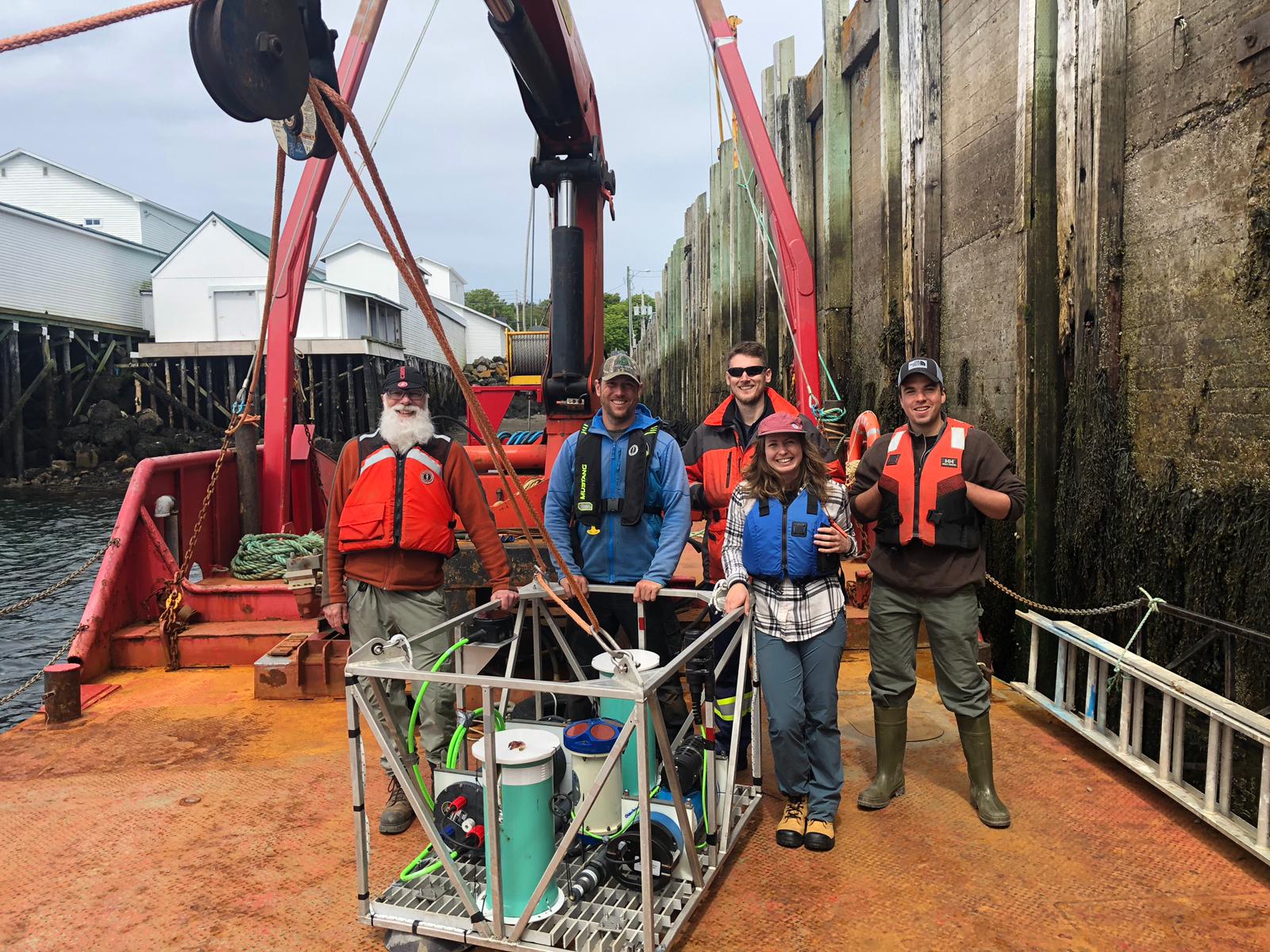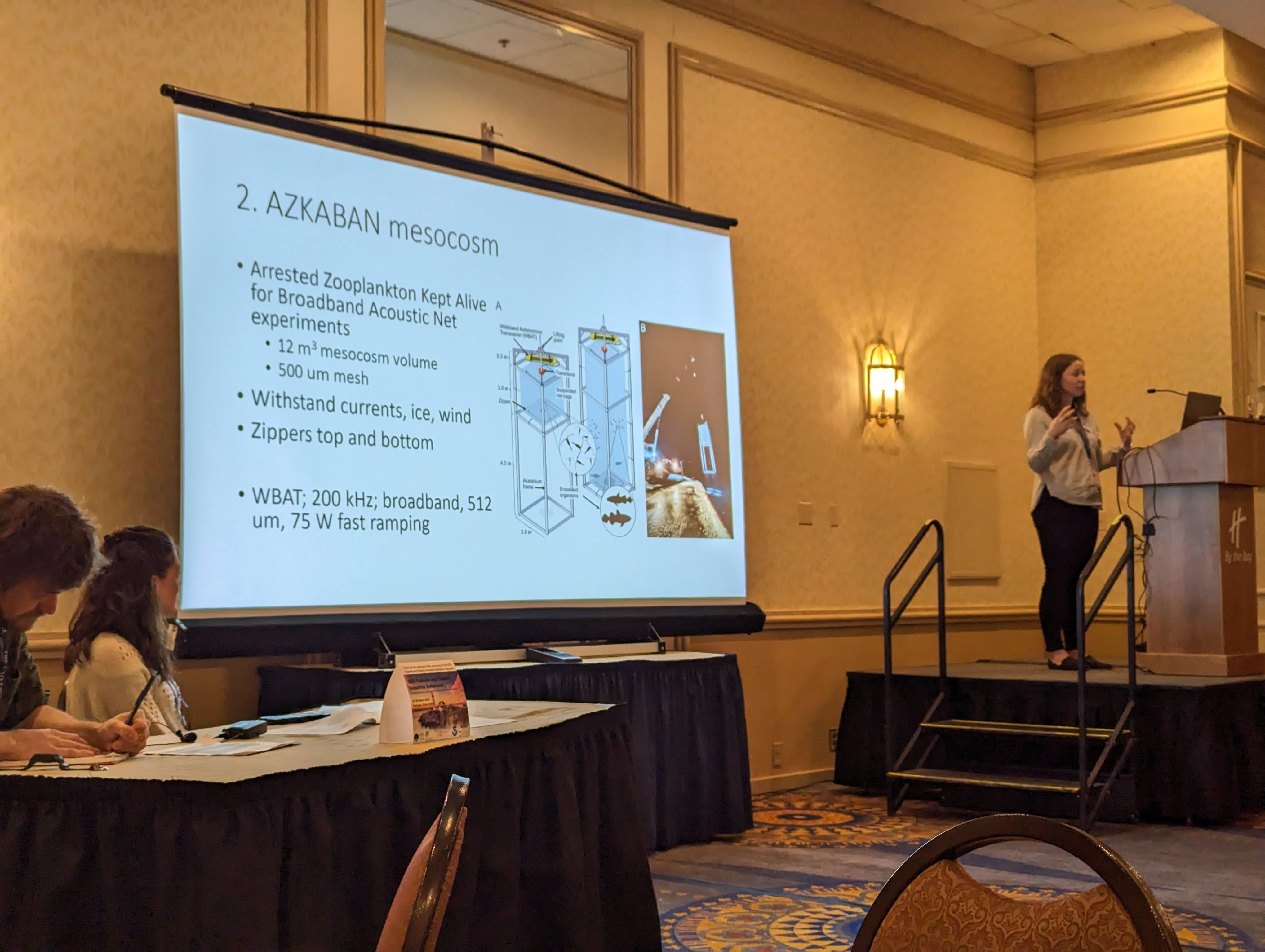AZKABAN-light 2022
During my PhD I lead a field campaign, AZKABAN-light (Arrested Zooplankton Kept Alive for Broadband Acoustic Net light experiment) during which we built a purpose-built mesocosm species for acoustic experiments in Ny-Ålesund, Svalbard during the polar night in January 2022. Fieldwork collaboration with Chelsey McGowan-Yallop and Stig Falk-Petersen. Photo taken by Malin Daase. 



